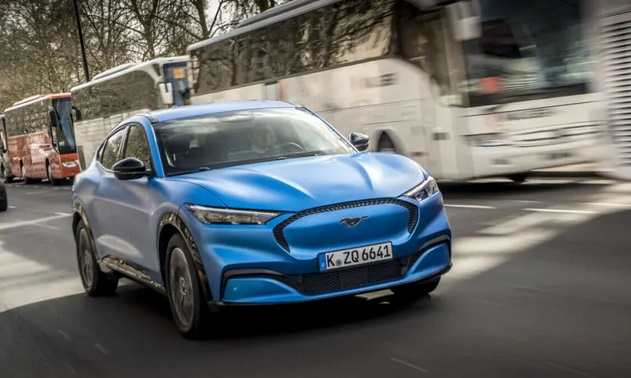Sales of the Ford Mustang Mach-E are sinking in the United States.
Ford declared last year that it would abandon its electrification plan as a result of lower-than-anticipated sales growth. The Oval company will thus lower its spending by about $12 billion to better meet consumer demand.

According to the firm, it has lost $36,000 for every electric vehicle sold, mostly the pricing war that Tesla initiated at the beginning of the year. Due to this, it has reduced manufacturing capacity for the F-150 Lightning and Mustang Mach-E, the only two electric versions offered for sale in the US (apart from the E-Transit van).
Ford sold 4,674 electric vehicles in its home market in January, 11% fewer than the last year. By the end of 2023, they only made up 3.2% of the entire volume (145,632 automobiles), as opposed to over 6% at that point. What caused this decline? There are still 1,295 Mustang Mach-Es on the market, a 51% decline in sales.
The F-150 Lightning’s registrations have only dropped by 0.3% per year 2,258 units sold. The E-Transit saw a remarkable 214% rise to 1,121 units, but it was unable to reverse this negative trend.
A Tesla Model Y victim is the Ford Mustang Mach-E.
Even though the number of Mustang Mach-Es produced in Mexico in January was just 3,454—the lowest since the start of the year—the United States still has 21,400—enough inventory to withstand many months’ worth of sales. As the year goes on, inventories may return to normal due to the decreased manufacturing capacity.

Ford’s annual production targets of 150,000 F-150 Lighting and 210,000 Mustang Mach-E are a long way off. That is comparable to the dilemma faced by General Motors, which is changing its approach as a result of the sluggish progression of demand—which is essentially monopolized by Tesla in the United States.
Since the allocated electric platform is the GE2, which will support the second-generation Mustang Mach-E, it is unclear how these figures would impact the brand’s facility in Almussafes, Valencia. Based on the current situation, it appears that central Mexico will have sufficient supply in the short future to meet the demand for the model worldwide.
Source- InsideEVs
Related Post
